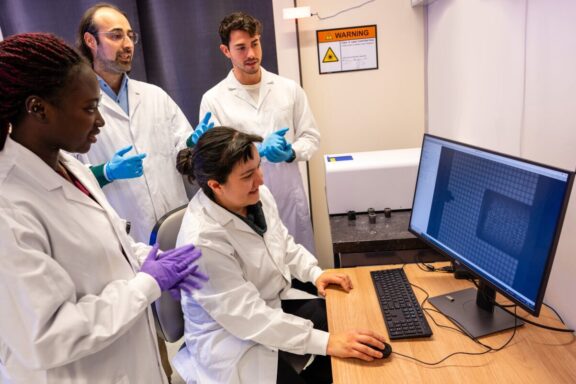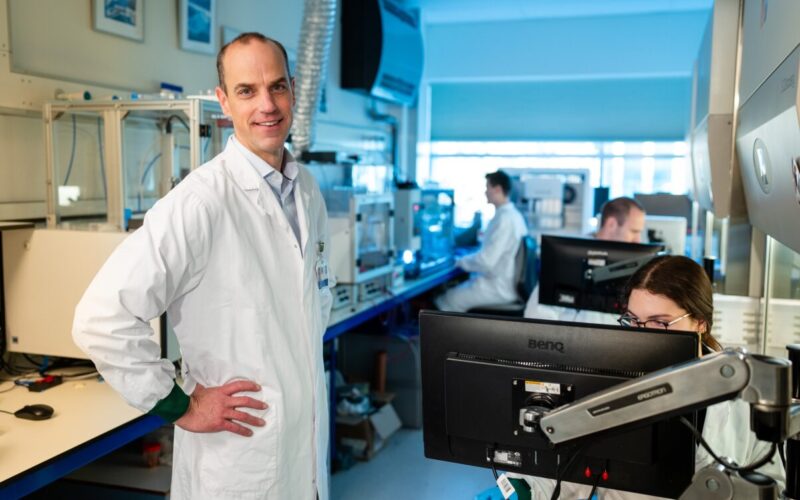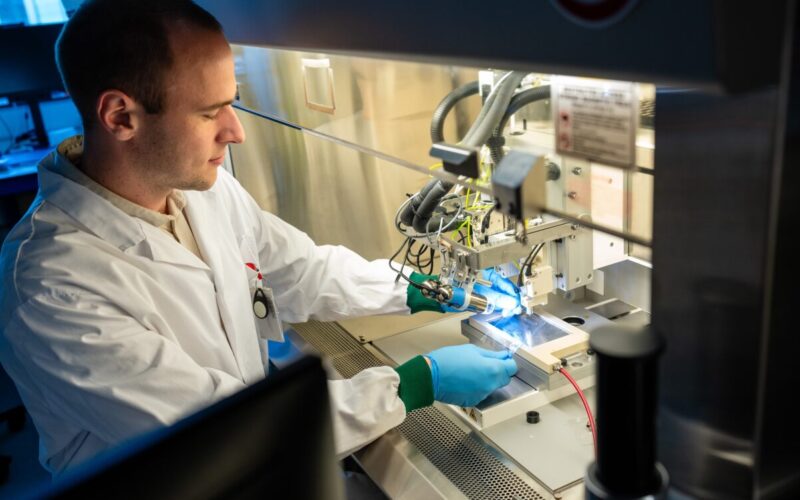
UMC Utrecht, in the Regenerative Medicine Utrecht, pioneers various aspects of biofabrication.
Biofabrication is the creation of functional tissues in order to regenerate or repair the body’s damaged or diseased organs. The production of these tissues should be standardized for clinical relevance and is often pursued by various forms of 3D bioprinting. At Regenerative Medicine Utrecht, some of the world’s most respected scientists in biofabrication are working together, continuously benefiting from each other’s work, and combining techniques and applications in an accelerated way. In the stories, you’ll meet some of these groups and their work in more detail.
The clinical potential of biofabrication is very broad. For instance, the heart patch by Joost Sluijter’s group is a scaffold with living, contracting cardiac cells that is placed on the outside of the injured heart muscle, thereby providing functional support to the damaged heart muscle. For cartilage damage, Jos Malda is developing a layered plug that is inserted in the bone and cartilage, which will induce integration of the implant in the recovering tissue. Another option, pursued by Marianne Verhaar, is to create a combined biological and technological device that aids the removal of waste products for kidney patients, improving or even surpassing dialysis technique.
In its optimal form, biofabrication can regenerate the body before the damage grows larger. This would not only help the patient to stay healthy, mobile and with improved quality of life, but also mitigate significant healthcare costs that would occur later.
The development of biofabrication is a story of overcoming cell sensitivity. A human body can seem so robust, as we walk around, eat, exercise and work. But the smaller the part of the human that you consider, the more sensitive and fragile it gets. Printing a single cell is a challenge because cells only live in narrow temperature ranges, so classic 3D printers are much too hot. They don’t stay alive on their own for long without nourishment, so they need a nutritious gel around them. They need to mature to be able to function, which means they need room to grow and to connect to other cells. All of these requirements, and more, direct the development of biofabrication technology.
To help cells as well as the clinical goals, biofabrication branched out from extrusion 3D bioprinting to include many other forms, each with their own answer to these aforementioned challenges. In Utrecht, we developed volumetric bioprinting as a fast and cell-friendly alternative to 3D extrusion printing. We then also adopted melt electrowriting (MEW) printing as a way of adding strength to 3D prints. The Laser-Induced Forward Transfer or LIFT printer adds a dimension of accuracy to bioprinting in 2D.
To make clinically relevant prints, they need to be centimeters in size, and standardized. The size requirement means that a print will have to be made fast in order to let the cells survive. It also needs to allow the cells to grow, migrate and communicate – mature – while providing structural strength and even guidance through a specifically shaped scaffold. This can only be done by combining various techniques. And after pioneering some of these bioprinting technologies by themselves, we are now combining them. Our new robotic arm can hold a print at various angles, allowing for more complicated shapes as well as combining different printing techniques.
Placing the cells in a print is only part of the story. Even after the most careful deposit, a cell needs to thrive to become part of a clinical intervention. Another dimension that we are working on is therefore time. By adding signaling molecules to a printed gel, for example, it’s possible to direct cells and help them to mature into the right, functional tissue.
In this article, three recent innovations are highlighted that will help to make bioprinting more clinically relevant.
The Experimental Cardiology group is exploring how biofabrication can repair the damaged heart.
Although dialysis is life-saving, it also has disadvantages. Will kidney patients receive an implantable artificial kidney in the future?
3D technologies play an increasingly important role in analyzing and mapping each patient’s unique needs.

